Unlocking the Potential of DOOH Advertising: New Research Unveils Optimal Creative Enhancement Strategies
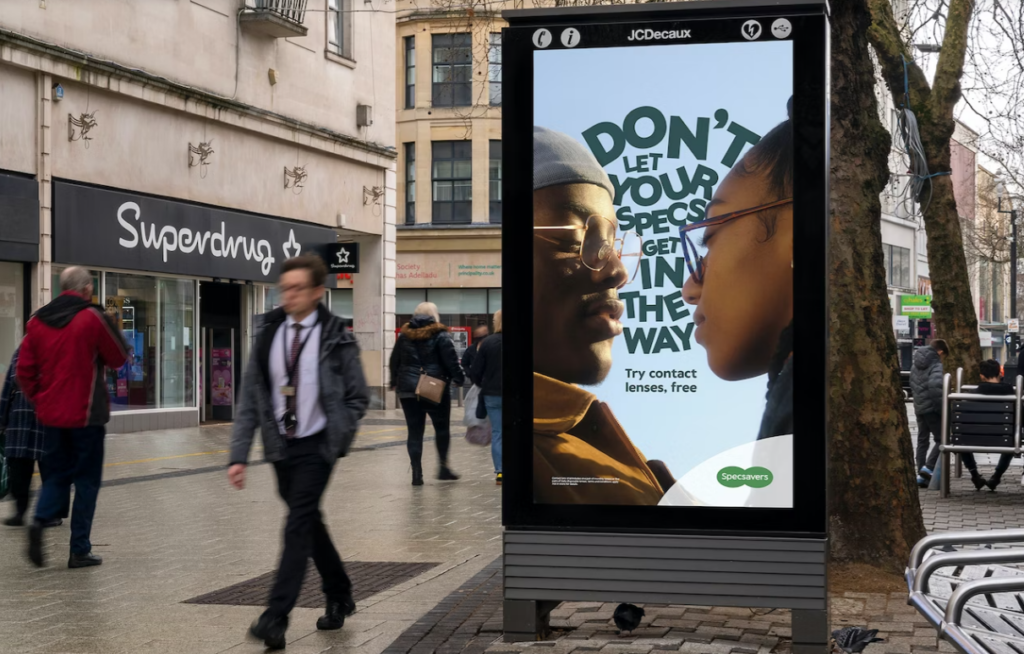

Numerous brands are continually pushing the boundaries of creativity to produce captivating out-of-home (OOH) campaigns, particularly in the realm of digital OOH. But amidst these efforts, what truly holds the key to success? How can advertisers be confident that their visually striking creations will not only bolster brand establishment but also foster an increase in market share? Recent research titled ‘Crafting the Ideal Digital Poster,’ jointly conducted by System1, Lumen Research, and JCDecaux UK, asserts that creativity is indeed a pivotal driver of effectiveness in this context.
In a modern landscape where attention is a finite resource, the challenge for marketers lies in standing out and breaking through the noise of competing messages. As Mike Follett, MD of Lumen Research and founder of the Attention Council, frequently emphasizes, mere visibility doesn’t guarantee attention.
Recent insights highlight the significance of optimizing advertising for brand enhancement. Consider a scenario where a marketer employs a high-attention medium like OOH. What actionable steps should they take to ensure their digital poster creativity is optimized?
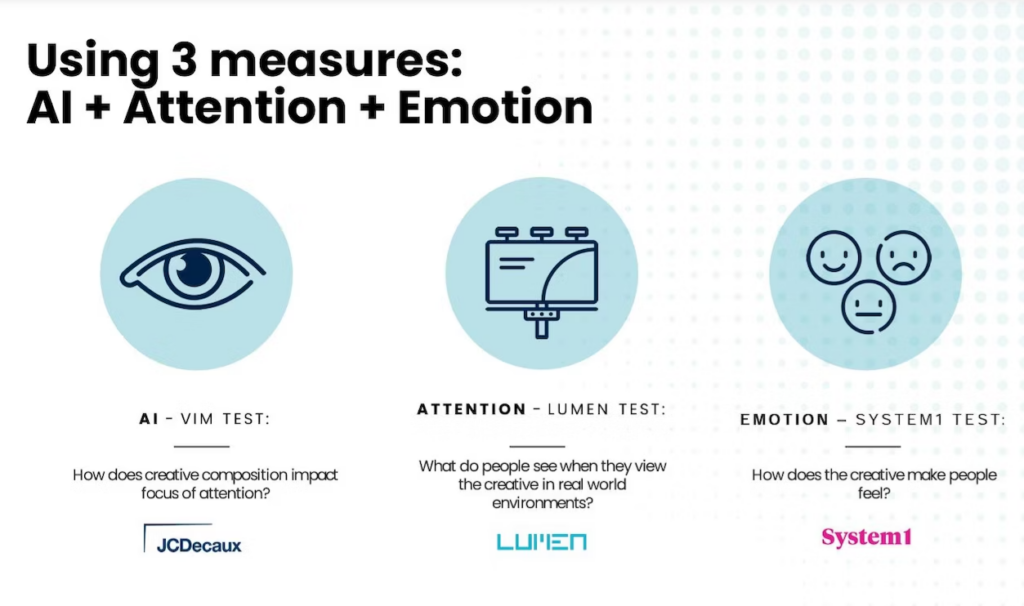
To delve into this, the research team behind ‘Crafting the Ideal Digital Poster’ dissected over 50 advertisements using three metrics: JCDecaux’s VIM test, utilizing AI to reveal how creative composition influences attention focus; Lumen’s real-world testing of what elements catch viewers’ eyes; and System1’s Test Your Ad platform, which gauges the emotional impact of creative and consequently its short- and long-term effectiveness.
Chris Felton, Director of Data and Insight at JCDecaux UK, noted, “This data-driven initiative aims to assist brands in delivering their messages on the OOH canvas. While we don’t provide creativity advice, this insight empowers us to optimize poster execution, making creative content work even harder. Through the collaborative efforts of System1, Lumen, and JCDecaux, we’ve amassed evidence of what genuinely produces results. A clear takeaway from the study is the dominance of the brand – clients who bolster branding visibility, amplify logo size, trim excessive copy, and magnify the call-to-action will reap tangible benefits.”
As the full research publication is slated for later this year, the team is currently sharing a set of best practices to guide marketers in refining their digital OOH creative strategies. Noteworthy discoveries from these guidelines include:
- Utilizing a fluent device heightens creative effectiveness by a third.
- Placing logos at the top leads to a 32% increase in brand recall.
- Products occupying over 50% of the space generate 38% more attention.
Andrew Tindall, Global Creative & Media Partnership Director at System1, explains, “Emotion is central to exceptional creativity. Consistent use of fluent devices, like recognizable characters, aids in building emotion, supporting narratives, and triggering brand recognition. Employing the same fluent devices across TV, OOH, digital, and print is instrumental in capturing attention and cementing brand recall.”
The unveiling of results at a recent marketing conference spotlighted the importance of applying these findings to ensure swift brand recognition, underscoring the link between rapid brand identification and outcomes such as sales. The successful ASOS campaign, scoring an impressive 83% in brand fluency within two seconds, serves as a prime example of this connection. With its substantial logo placement and product prominence across three-quarters of the creative, the campaign’s triumph is hardly surprising.
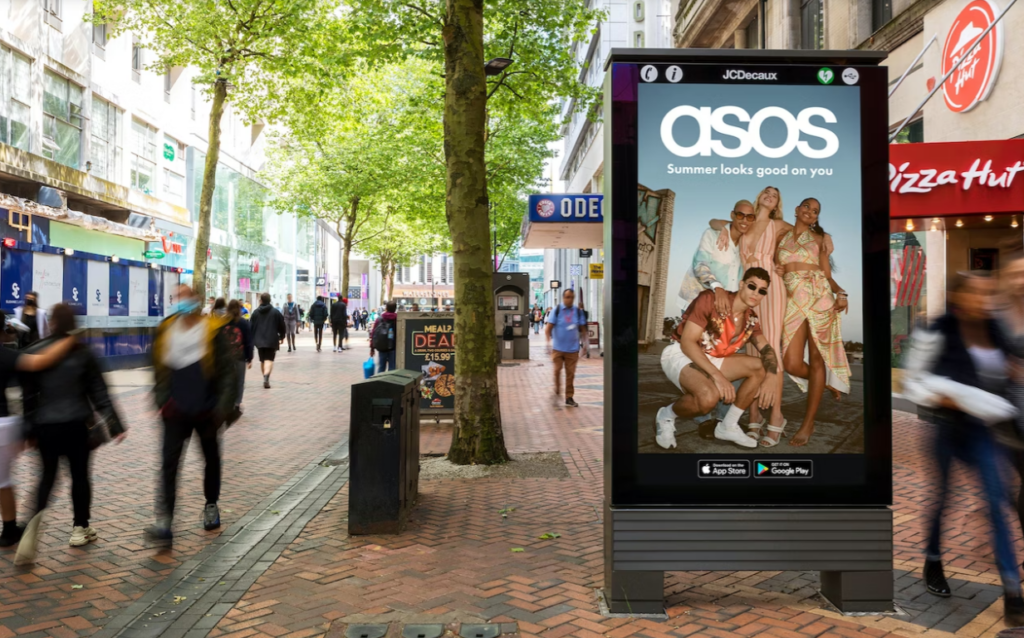
Illustrating the point, a case study by JCDecaux UK and VIOOH showcased ASOS’s OOH campaign achieving a 10% boost in brand awareness, a 9% surge in consideration, and a 1% increase in overall market share. While meticulous media planning targeting ASOS’s fashion-conscious audience certainly played a pivotal role, the creative’s capacity to cut through was equally significant.
Ever since System1’s Orlando Wood introduced his research on fluent devices in 2017 during the IPA Effectiveness Week, a growing body of evidence has highlighted that advertising’s memorable and emotionally resonant assets contribute to building a brand’s legacy – consider Compare The Market’s meerkats or Andrex’s puppies.
Specsavers serves as another illustrative example. Their skilled use of fluent devices earned them praise at the IPA Effectiveness Awards, securing a Gold accolade. Judges lauded Specsavers for their foresight in utilizing advertising to construct a business over three decades, with an enduring presence, broad appeal, a commitment to humor, and distinctive brand assets fostering memory structure.
Specsavers’ consistent creative success, evident in multiple awards including The Drum OOH Awards, made their involvement in the ‘Crafting the Ideal Digital Poster’ research project invaluable. Sonya Mooney, Marketing Communication Lead for Specsavers, affirmed, “JCDecaux has aided us in gauging the efficacy of our OOH creative, and we eagerly anticipate future collaborations to guide our OOH design for top-tier creativity within the sector.”
At the results preview, Sonya highlighted several insightful findings resonating with brands, such as the potential to enhance attention through color adjustments and the substantial gains achievable by modestly enhancing the call-to-actions size. The study also underscored the positive impact of altering brand logo placement.
The Role of Creativity in Achieving Marketing Success
Justin Gibbons’ groundbreaking concept, captured in the formula ‘P² + C = 6,’ delves into the creative contribution to marketing triumph. Beyond this formula, Gibbons advocates for brands to harmonize their public and private screens (P²) and infuse creative excellence (C) – encompassing distinctive assets and asset adaptability across channels. Mastering the P² and C aspects translates to six vital outcomes: awareness, consideration, activation, attention, trust, and priming. This perspective aligns with Gibbons’ earlier work in ‘P² + C = 5,’ which emphasizes the importance of context in maximizing the impact of distinctive assets.
The concept of contextually relevant messaging, as showcased in Starbucks’ memorable “It’s raining, we’re pouring” campaign, has been demonstrated to uplift OOH effectiveness by an average of 17%. The relevance can be achieved through timely moments (weather, events, time of day), relevant content (“hello London”), or a combination, reinforcing the power of contextual resonance.
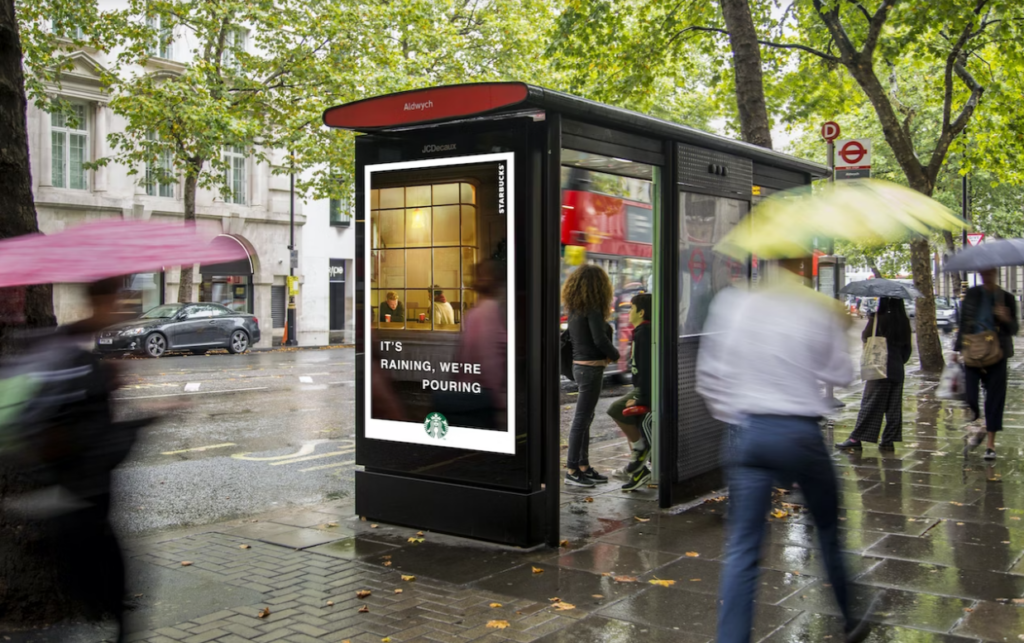
This theme of timely moments resonates with Andrew Tindall of System1, who underscores the potency of relatable situations in advertising, leading to salience and engagement. Just as historical artists captured pivotal moments to captivate viewers, contemporary creatives can leverage similarly impactful gestures and actions, fostering cut-through and effectiveness.
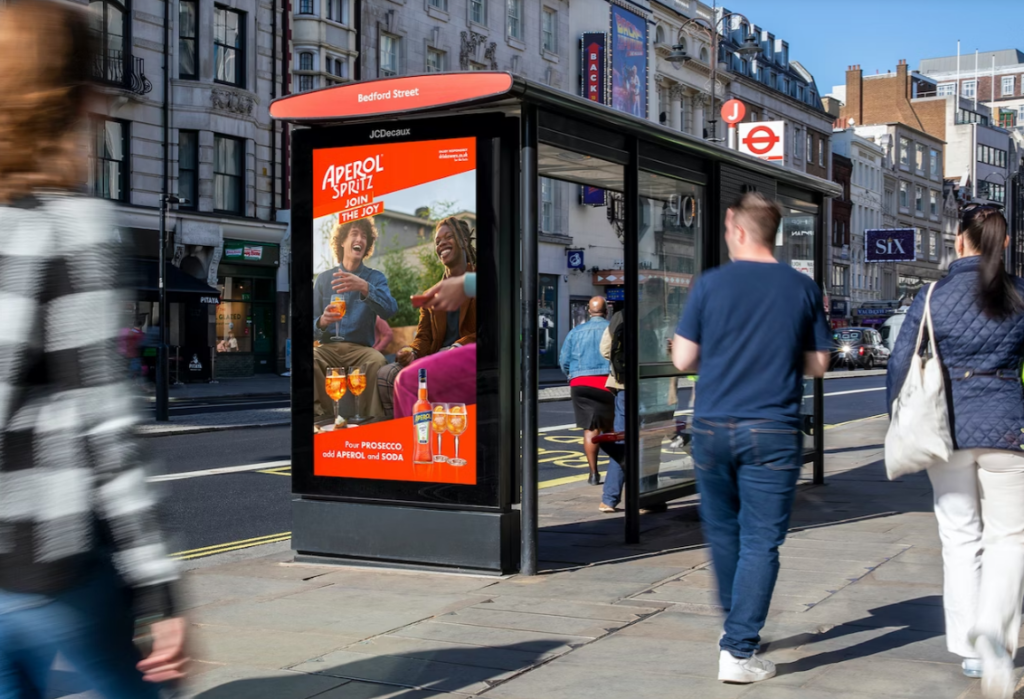
In essence, advertising operates on two primary levels. The aim is to create memorable associations in advertising that individuals can draw upon in the future. As Gibbons notes, the creative’s efficacy is gauged by its message delivery and its recall over time – where fluent devices come into play.
Practical Steps for Marketers to Take
In an era inundated with information, creativity emerges as a potent tool for marketers to harness. Its capacity to engage, captivate, and etch a lasting impression on consumers is unparalleled. The next steps for marketers are clear: access the ‘Crafting the Ideal Digital Poster’ creative guidance to optimize OOH digital posters. Delve into a sneak peek of collaborative research with System1, Lumen, and JCDecaux UK on YouTube, aimed at enhancing creative execution’s effectiveness. Finally, for those seeking to explore the role of creative effectiveness for their brand in OOH, reach out on LinkedIn for more insights.

